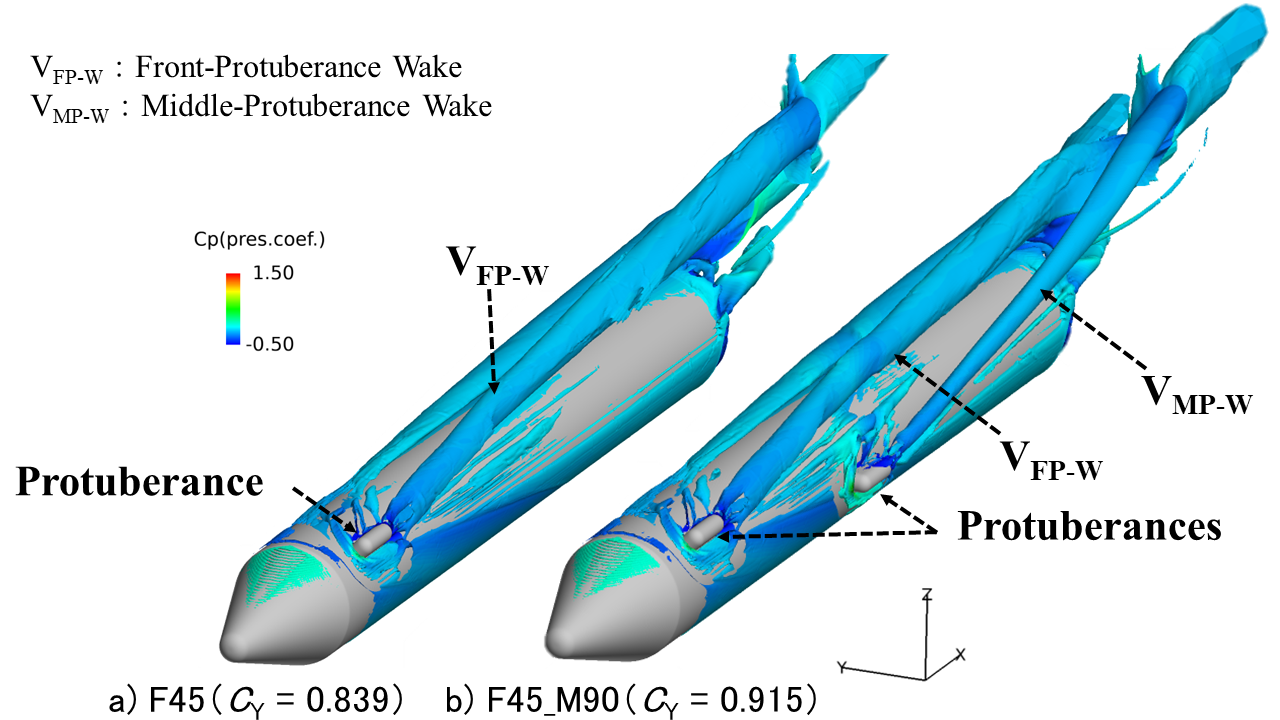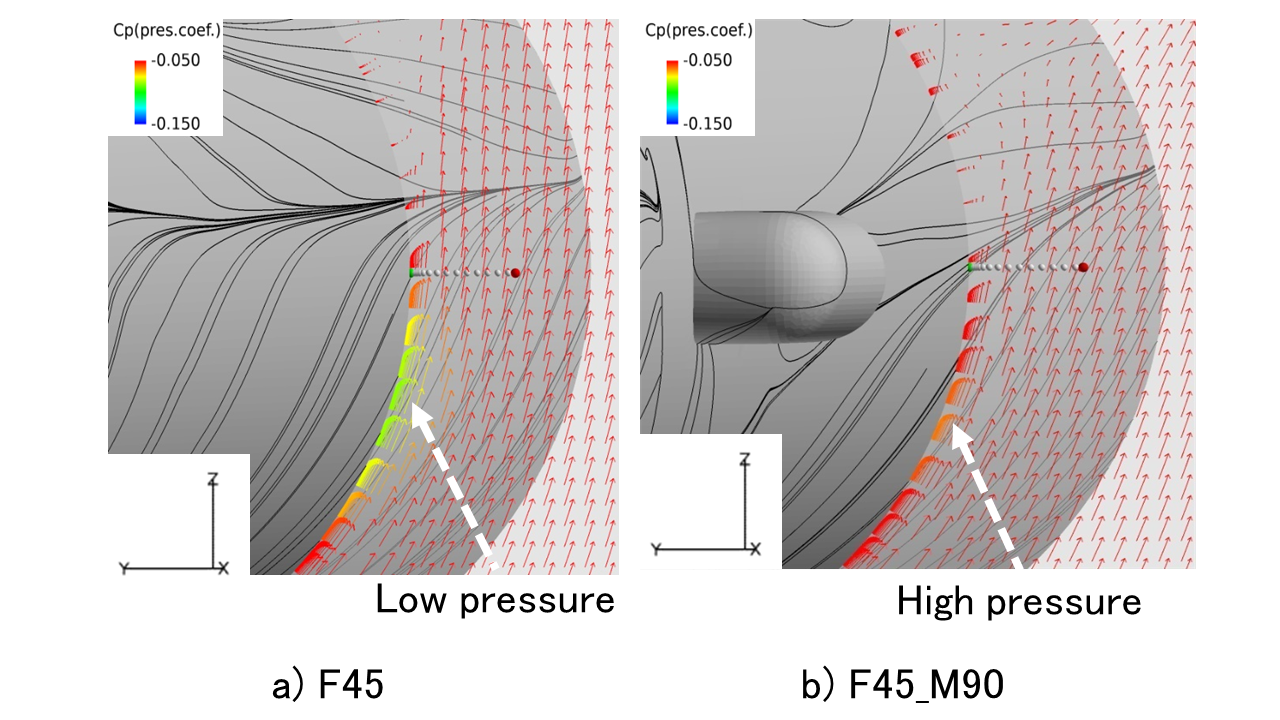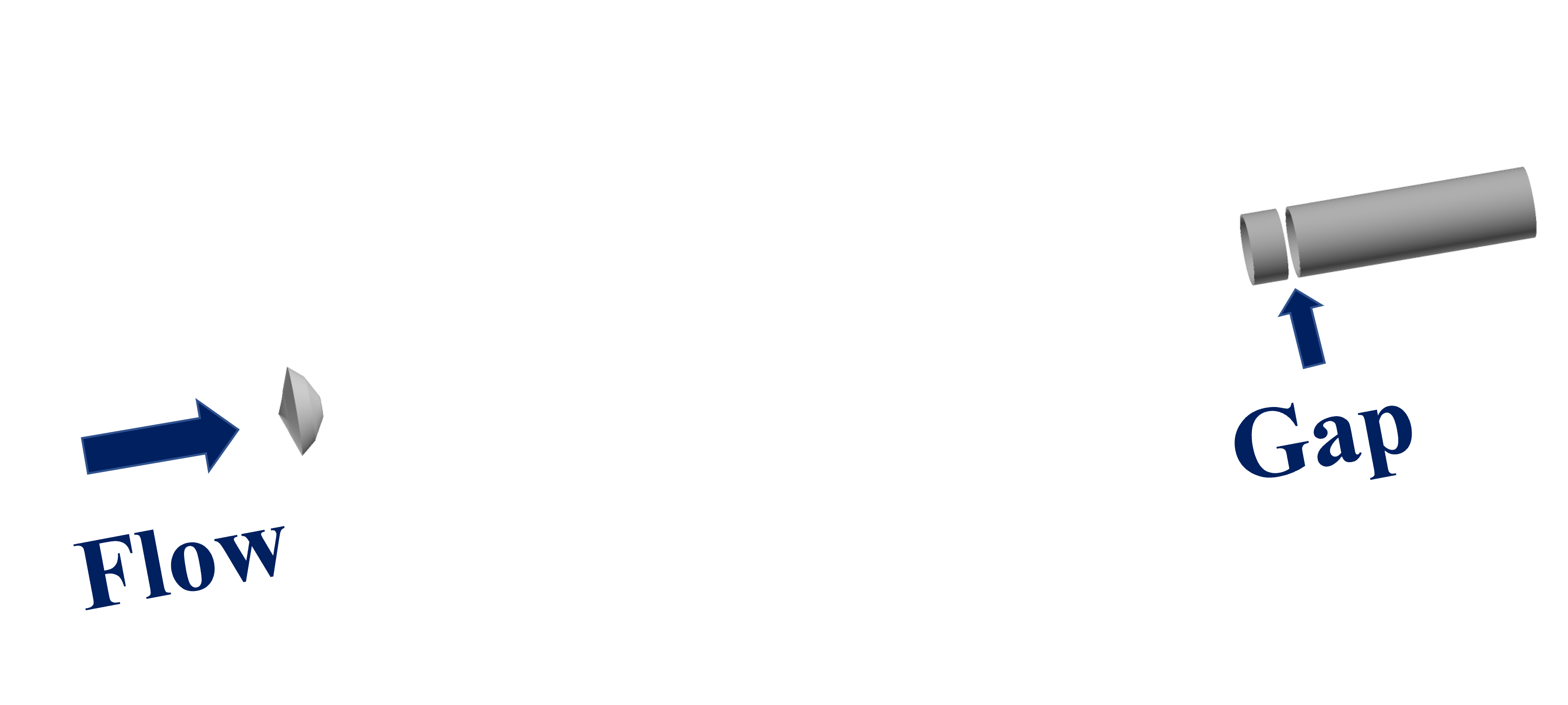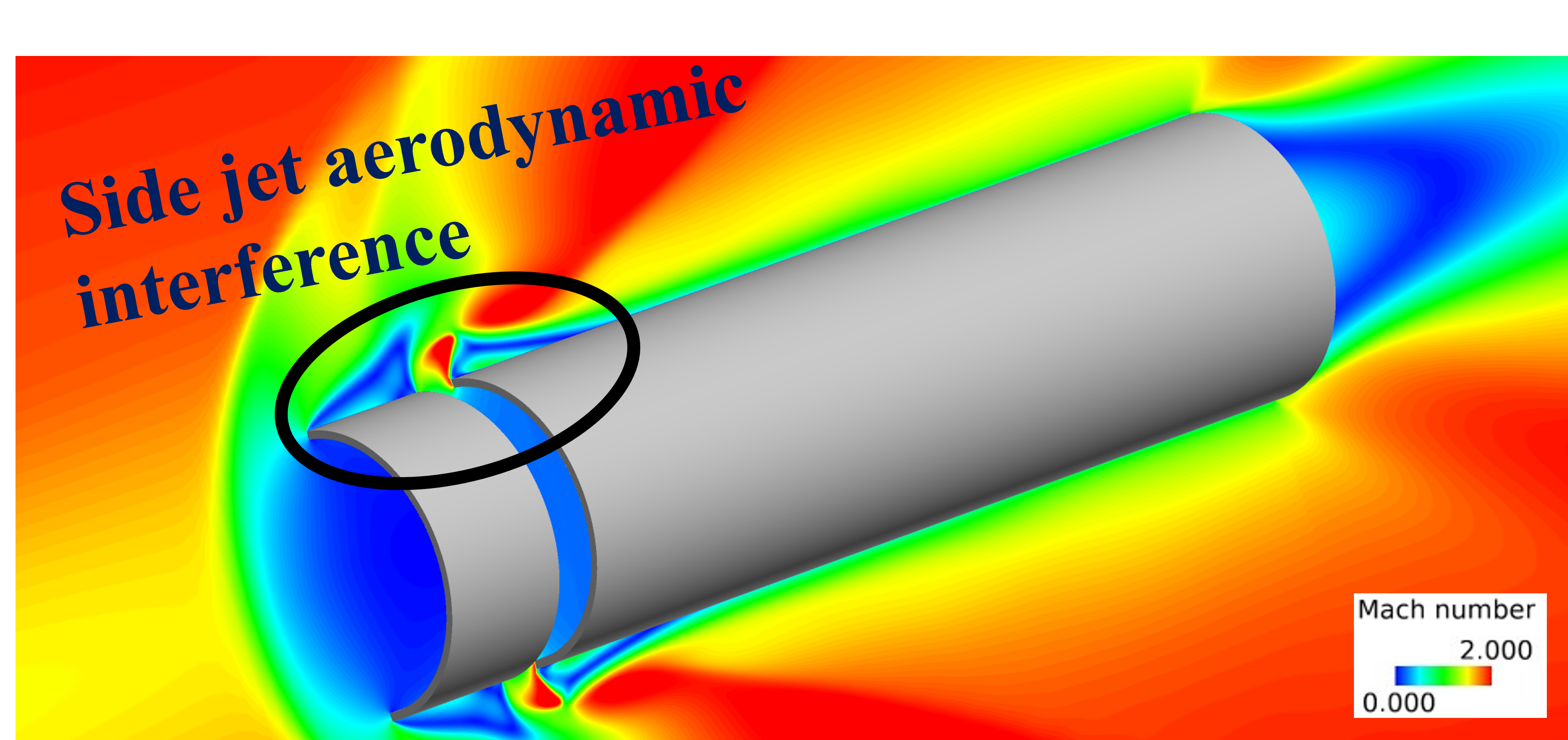Aerodynamic Analysis of Flying Vehicle at Supersonic Regime
JAXA Supercomputer System Annual Report February 2021-January 2022
Report Number: R21EACA20
Subject Category: JSS Inter-University Research
- Responsible Representative: Keiichi Kitamura, Associate Professor, Yokohama
- Contact Information: Fumiya TSUTSUI (Yokohama National University)(tsutsui-fumiya-rt@ynu.jp)
- Members: Keiichi Kitamura, Fumiya Tsutsui, Yuya Yasumura
Abstract
Both launch vehicles and supersonic parachutes play an important role in space transportation, and fly at supersonic speeds. Factors that hinder safe flights include the generation of complex vortex structures caused by protuberances on the rocket’s surface and deformation of the supersonic parachutes due to shock wave vibration (Area oscillation). The effects of these fluid phenomena on the aerodynamics of flying vehicles and their detailed mechanisms are not completely revealed, and furthermore, the data available from wind tunnel tests are limited. Therefore, in this project, numerical analyses are conducted for launch vehicles with protuberances and supersonic parachutes, and detailed aerodynamic data are obtained.
Reference URL
N/A
Reasons and benefits of using JAXA Supercomputer System
In the numerical calculations of slender-bodied vehicles, it is necessary to capture the shock waves around protruding devices and complex vortex structures such as horseshoe vortex. Furthermore, for numerical calculations of supersonic parachutes, it is essential to accurately simulate shock wave oscillations. Such simulations require numerical calculations on high-resolution computational grids, which are computationally expensive. Hence, the use of supercomputers, which can perform large-scale calculations in a short period of time, is indispensable.
Achievements of the Year
1. Aerodynamic Calculation of Slender Body with Asymmetric Multiple Protuberance
Numerical calculations were performed for slender-bodied vehicles with a slenderness ratio of 8.9, with one protuberance mounted on the leeward side at the front portion of the vehicle (front protuberance) and another at various azimuthal positions at the middle portion (middle protuberance). The uniform flow Mach number was set to M = 1.5, and the attack angle was to AoA = 15 [deg.]. As a result, as shown in Fig. 1b, when the middle protuberance is attached on the horizontal plane of the vehicle (F45_M90), the side force increases by 9.0% compared to the case with only the front protuberance (Fig. 1a). This is because the fluid near the port side surface (protuberance side) is entrained to the vortex core of the wake vortex generated from the middle protuberance (VMP-W in Fig. 1b), which decelerates the flow on the port side, resulting in higher pressure than the case with only the front protuberance.
2. Aerodynamic Calculation of Supersonic Parachute
The supersonic parachute at the initial stage of opening is studied by numerical analysis to examine the effects of opening area, with the uniform flow Mach number M = 2.0. By adding an opening area called a gap (see Figure 3) near the front end of the parachute, a flow through the gap is induced. On the other hand, the pressure fluctuation outside the parachute increases. This is due to the side jet aerodynamic interference caused by the flow through the gap.
Publications
– Oral Presentations
1) Tsutsui, F., Kitamura, K., and Nonaka, S.: Effect of Turbulence Models on Aerodynamic Characteristics of Slender Body with Protuberance, 1A11, 53rd Fluid Dynamics Conference / 39th Aerospace Numerical Simulation Symposium, Online, June-30-2021.
2) Yasumura, Y., Kitamura, K.: Aerodynamic Calculation of Supersonic Parachute at Initial Stage of Opening : Effects of Gap and Clearance, S191-01, Mechanical Engineering Congress, Online, September-07-2021.
3) Tsutsui, F., Kitamura, K., and Nonaka, S.: Effects of RANS Turbulence Models on Aerodynamics of Slender-Bodied Launch Vehicles with Protuberance, P00155, 12th Asia-Pacific International Symposium on Aerospace Technology (APISAT 2021), Jeju, South Korea & Virtual, November-15-2021.
4) Tsutsui, F., Motoki, S., Yasumura, Y., Kitamura, K., and Nonaka, S.: Transonic Wind Tunnel Test of Slender Body with Asymmetric Multiple Protuberance, Symposium on Flight Mechanics and Astrodynamics, Online, December-20-2021.
Usage of JSS
Computational Information
- Process Parallelization Methods: MPI
- Thread Parallelization Methods: N/A
- Number of Processes: 512 – 1024
- Elapsed Time per Case: 8 Hour(s)
JSS3 Resources Used
Fraction of Usage in Total Resources*1(%): 0.13
Details
Please refer to System Configuration of JSS3 for the system configuration and major specifications of JSS3.
| System Name | CPU Resources Used(Core x Hours) | Fraction of Usage*2(%) |
|---|---|---|
| TOKI-SORA | 2374626.56 | 0.12 |
| TOKI-ST | 184966.71 | 0.23 |
| TOKI-GP | 0.00 | 0.00 |
| TOKI-XM | 0.00 | 0.00 |
| TOKI-LM | 864.02 | 0.06 |
| TOKI-TST | 0.32 | 0.00 |
| TOKI-TGP | 0.00 | 0.00 |
| TOKI-TLM | 0.00 | 0.00 |
| File System Name | Storage Assigned(GiB) | Fraction of Usage*2(%) |
|---|---|---|
| /home | 502.00 | 0.50 |
| /data and /data2 | 30380.00 | 0.32 |
| /ssd | 2630.00 | 0.68 |
| Archiver Name | Storage Used(TiB) | Fraction of Usage*2(%) |
|---|---|---|
| J-SPACE | 19.80 | 0.13 |
*1: Fraction of Usage in Total Resources: Weighted average of three resource types (Computing, File System, and Archiver).
*2: Fraction of Usage:Percentage of usage relative to each resource used in one year.
ISV Software Licenses Used
| ISV Software Licenses Used(Hours) | Fraction of Usage*2(%) | |
|---|---|---|
| ISV Software Licenses(Total) | 2071.46 | 1.45 |
*2: Fraction of Usage:Percentage of usage relative to each resource used in one year.
JAXA Supercomputer System Annual Report February 2021-January 2022






